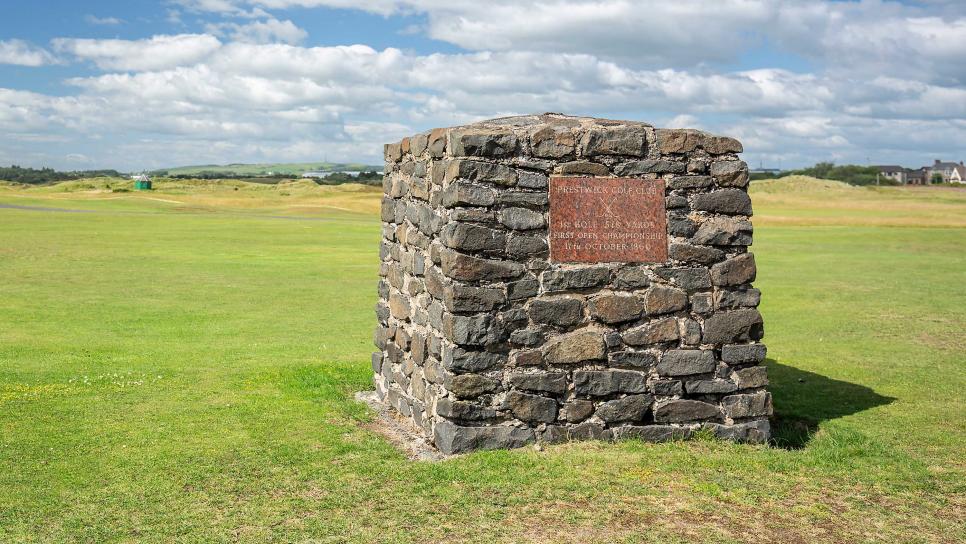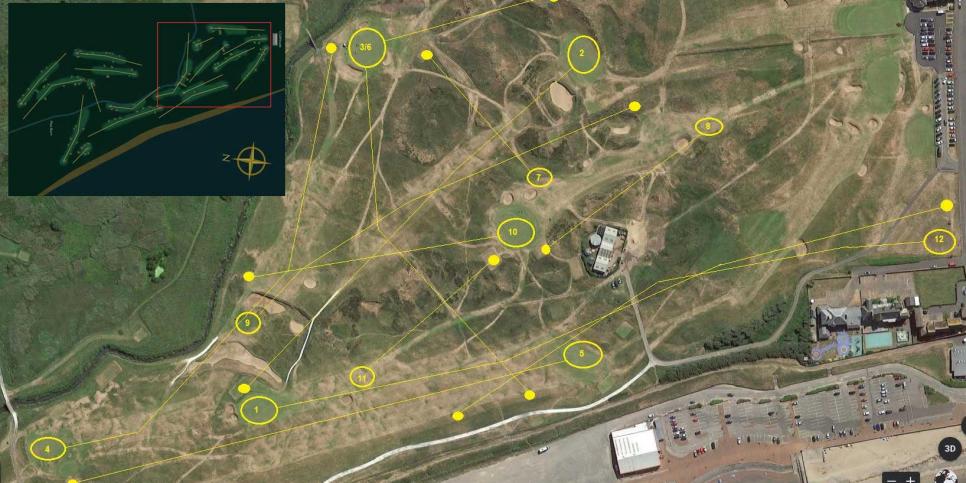[PHOTO: Mark Alexander]
In every other respect, it was just an ordinary October Wednesday in Prestwick 162 years ago. But down at the local links, a golf competition was about to be born. Three weeks prior to Abraham Lincoln being elected the 16th president of the United States and only months before America would indulge in the ultimate oxymoron, a Civil War, eight competitors – seven Scots and an Englishman – were readying themselves to tee off.
The tournament was played over 36 holes and there was no halfway cut (so no world ranking points were awarded). But this was the beginning of what is today golf’s most historic event, the Open Championship. Which was, at least for that first playing, a misnomer. No amateurs were allowed to enter, only professionals.
Not until the night before the second playing of the event in 1861 was it resolved that moving forward the event would be open to all the world. That reference is still to be found in the Prestwick Golf Club minutes book and probably led to the expression “The Open”. The first event, however, was actually not an open. It was invitational, a bit like the Masters and merely an effort to find a successor to Allan Robertson, the so-called “champion golfer of Scotland” who had passed away the previous year.

“Robertson was the first player to break 80 on the Old Course at St Andrews,” says Ken Goodwin, Prestwick secretary. “He never lost a money match playing his own ball. He never lost a money match with a Morris as his partner. The members at Prestwick, more for their own amusement than anything else, thought it would be good to have an event to identify the new champion. There was no enthusiasm from St Andrews or Musselburgh, so they did it themselves. Most of the good players would be coming to Prestwick to caddie for their gentlemen in the autumn medal. So they would be here anyway.”
Play began at noon on October 17, 1860 – late for that time of year in Scotland – but there was no risk of the golfers not getting round before darkness. After two loops of the 12-hole circuit, they even had time for a break at the Red Lion Inn before returning to the course for the third round. All of which was completed in four-and-a-half hours.
RELATED: The mystery behind Prestwick’s disappearance from the Open rota
The Prestwick club’s “keeper of the green and club and ball maker”, Old Tom Morris, had designed the layout nine years earlier and was a strong favourite to claim first prize, the red Moroccan championship belt that cost the hosts all of £25. But it wasn’t to be. With a score of 174 – 55-59-60 – Willie Park Snr of Musselburgh claimed the first of what would be his four Open victories, two shots clear of Morris.
“Old Tom’s approach to course design was interesting,” Goodwin says. “There are two versions. In one, he went round with a pocketful of feathers. And in the other, a pocketful of sticks. He went out and looked for good places for greens, which he marked with a feather or a stick, depending on which version you believe. Then he would wander off and find another one. And another. If there was a sand dune or depression in the way, it was up to the golfer to negotiate it. You either went over it or round it.”
That fundamental strategy continues to apply today to the now 18-hole layout at Prestwick, which uses six of the original 12 greens. The course remains unashamedly old-fashioned, a quaint and quirky mix of humps, hollows and blind shots. And, happily, one hole has survived from Day 1. The par-4 17th (“the Alps”) that members play today is the one played in the first Open. The second on the 12-hole course, it is 385 yards and more manicured now than it was then. But golfers still play over the same hill. The Sahara bunker still sits in front of the green. And the green is still marked by an extreme slope. It is the oldest existing hole in Major-championship golf.
Anyway, starting yesterday and lasting for two weeks this month, the original Open layout, recreated as never before, is going to be available to a mixture of members, media and, on a couple of days at least, visitors.

“We’ve always had a good idea where the greens were and that the routing was,” Goodwin said. “The big problem was we didn’t have the equipment necessary to get the job done. So the whole thing was really quite rudimentary. It took a long time to prepare. But now we have the equipment that allows us to cut back large swathes of rough. We’ve done that. Take the first/12th holes. A year ago, the fairway there was covered in grass 18 inches long.”
Inevitably, some compromises have had to be made in trying to recover or retrieve the original course. At the short seventh, “Green Hollow”, where the semi-blind putting surface is in what was rough, the construction of a green was necessary. So it won’t be the same condition of the original. But even the worst green is probably better than the best green in 1860. And yes, the fairways are still a wee bit rough in places. But that is how it was back then. In those days, a lot of golf was actually played in winter. In summer, cattle and sheep were used to graze and keep the grass down as much as possible.
One other 19th century feature will be in evidence this month. Rather than the usual flags, the pins will be topped by baskets, something that will be more than familiar to those who have visited Merion Golf Club outside Philadelphia, a five-time US Open host.
“Back then, you could use whatever you wanted to indicate the position of the holes,” Goodwin said. “Some courses used rags on the end of sticks. But Prestwick preferred baskets, which probably started off as small fisherman’s creels. At some point early in the 20th century, we stopped using baskets and went to flags. But this month we are recreating the original feel. Hugh Wilson, who would go on to design Merion, visited in 1910 and took the idea back to the States.”
The scorecard for the original 12 holes is another fun feature. For whatever reason, those in charge at the Prestwick club were not content with mere yardages. Not nearly exact enough. Take the first hole, “Back of Cardinal”, which is played from the cairn that sits just outside the entrance to the club to what is now the 16th green and where, in 1870, Young Tom Morris started his third consecutive Open victory with a remarkable 3. On the card, the hole is listed as a “bogey six” and “stroke index one” befitting the most difficult hole on the course. And the distance from tee to basket: 578 yards, one foot and nine inches.
Indeed, there is no need for range finders at “old” Prestwick. Other examples: the second longest hole on the original Open course is the fourth, “Wall”, which measures 448 yards, two feet and five inches. The eighth, “Station”, (where Young Tom made the first Open hole-in-one in 1869) is 166 yards and four inches. And the 10th, “Lunch House”, is 213 yards, one foot and two inches.
One last thing: in 1851, when the course first came into being, health and safety issues were clearly not part of Old Tom’s thinking. On the 314 yard, one foot, nine inch sixth hole, “Tunnel (White)”, golf is a dangerous business. From the tee, the route to what is also the third green on “Tunnel (Red)” means sharing space with those playing the fifth, first and 12th holes, then entering what locals colloquially label, “the killing zone.” There, players on the second, ninth and seventh holes interfere with each other.
Still, let’s not be too harsh. Given what The Open is today, it’s hard to argue that the men of Prestwick got too much wrong.




